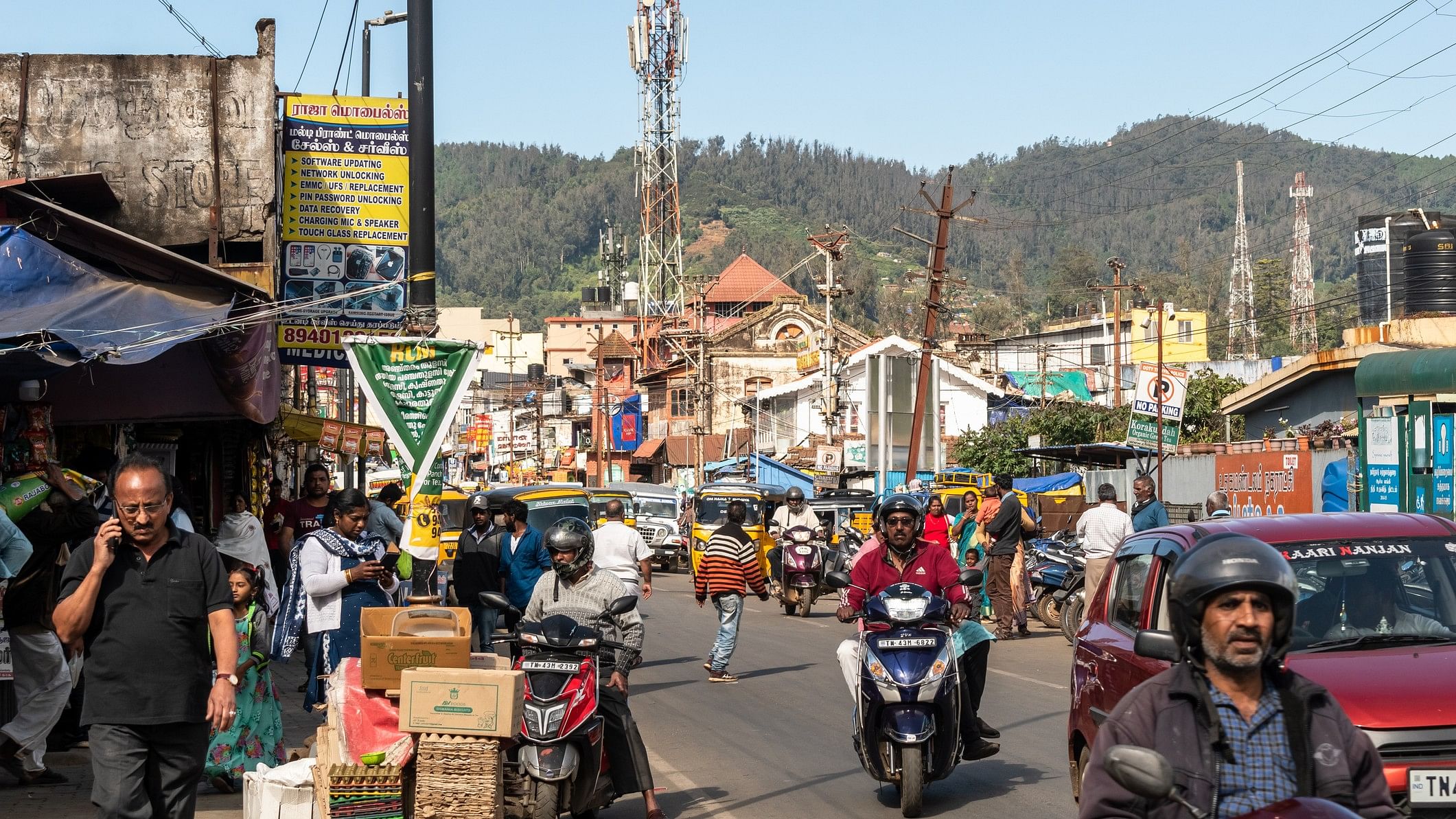
A crowded market in Ooty.
Credit: iStock Photo
Chennai: From next Summer, the Tamil Nadu government could impose a cap on the number of tourists and vehicles entering the popular hill stations of Ooty and Kodaikanal. The two towns, in the past few years, have witnessed a huge inflow of people during the months of May and June to beat the heat, seriously affecting the ecology of the picturesque tourist spots.
The state government has engaged the Indian Institute of Technology, Madras (IIT-M), and Indian Institute of Management, Bangalore (IIM-B), both prestigious institutions, to conduct detailed studies on the carrying capacities of Kodaikanal and Ooty and suggest traffic management through extensive field surveys.
Though the government has given the institutes about a year to complete the studies, it has however asked them to provide rough estimates regarding the carrying capacity of Ooty and Kodaikanal by April 2025, before the start of the next tourist season. While Amar Sapra, Professor, Production & Operations Management, IIM-B, will lead the study on Ooty, Dr Sachin S Gunthe of IIT-M will spearhead the study on Kodaikanal.
A government order (GO) issued recently has allotted Rs 2.09 to IIT-M and Rs 1.51 crore to IIM-B teams for the detailed study. The development comes months after the Madras High Court intervened in the matter and asked the state government to carry out carrying capacity studies in the two towns.
“The recent surge in tourist footfall due to unbearable heat poses a serious threat to the hill stations, endangering their ecological integrity and overall sustainability. The study will assess or evaluate the carrying capacity based on physical carrying capacity, real carrying capacity, and effective carrying capacity” a senior official told DH.
The study will consider and give its suggestions on implementing a visitor quota or entry permits to control the number of tourists accessing the sensitive areas within the hill stations, besides recommending the required traffic management to ease congestion, reduce pollution, and protect the wildlife habitat, and initiatives to manage waste, a key component.
“These measures will be implemented in the short-term while long-term strategies will be devised while developing a Master Plan for the two hill stations. The study will also suggest ways and means to implement short term measures like entry permits if they are feasible,” the official added.
Ooty is not just a major tourist destination for people from Tamil Nadu, Kerala, and Karnataka, but is also a lifeline for the western region of the state as most perennial rivulets originate from here. Ooty attracts about a million tourists each year during April-June, while Kodaikanal and near-by villages have become a favourite beat-the-heat spot, which has led to unregulated growth and tourism in the two hill stations.
An unprecedented inflow of tourists into Ooty in April 2024 with about 20,000 vehicles entering during weekends prompted the High Court to introduce an e-pass system to keep a tab on the number of vehicles. The effects of climate change are already being witnessed in Ooty with the town recording near-zero temperature with a nail biting cold in January 2024 and the Summer temperature hitting 29 degree Celsius, the highest since 1951.
The GO said the study will assess air, water, land, and biological environment, solid waste, quality of life of residents, and the viability of high value, low volume tourism which would protect the interests of the locals and help conserve the environment.
The study will also collect data on current traffic volumes, including vehicle counts, vehicle types and peak traffic hours, characteristics of road, demographic data, and conduct traffic flow analysis under the patterns of congestion.
“The study will also develop different scenarios to assess the impact of various interventions such as road improvements, alternative modes of transportation, or land use changes on road capacity and traffic flow. It will also come up with recommendations and mitigation measures, continuous monitoring and adaptive management,” the GO reads.
While assessing the carrying capacity of the two tourist towns, the study will also study implementation of intelligent transportation systems (ITS) to optimize signal timings based on real-time traffic conditions and establish weight limits for vehicles using roads in vulnerable areas.